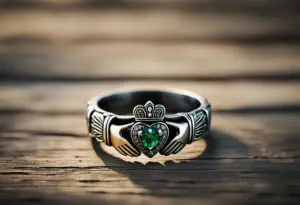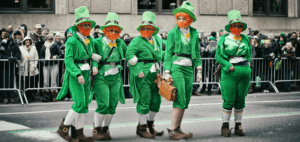Irish Art History: Amazing Celtic & Pre-Christian Art
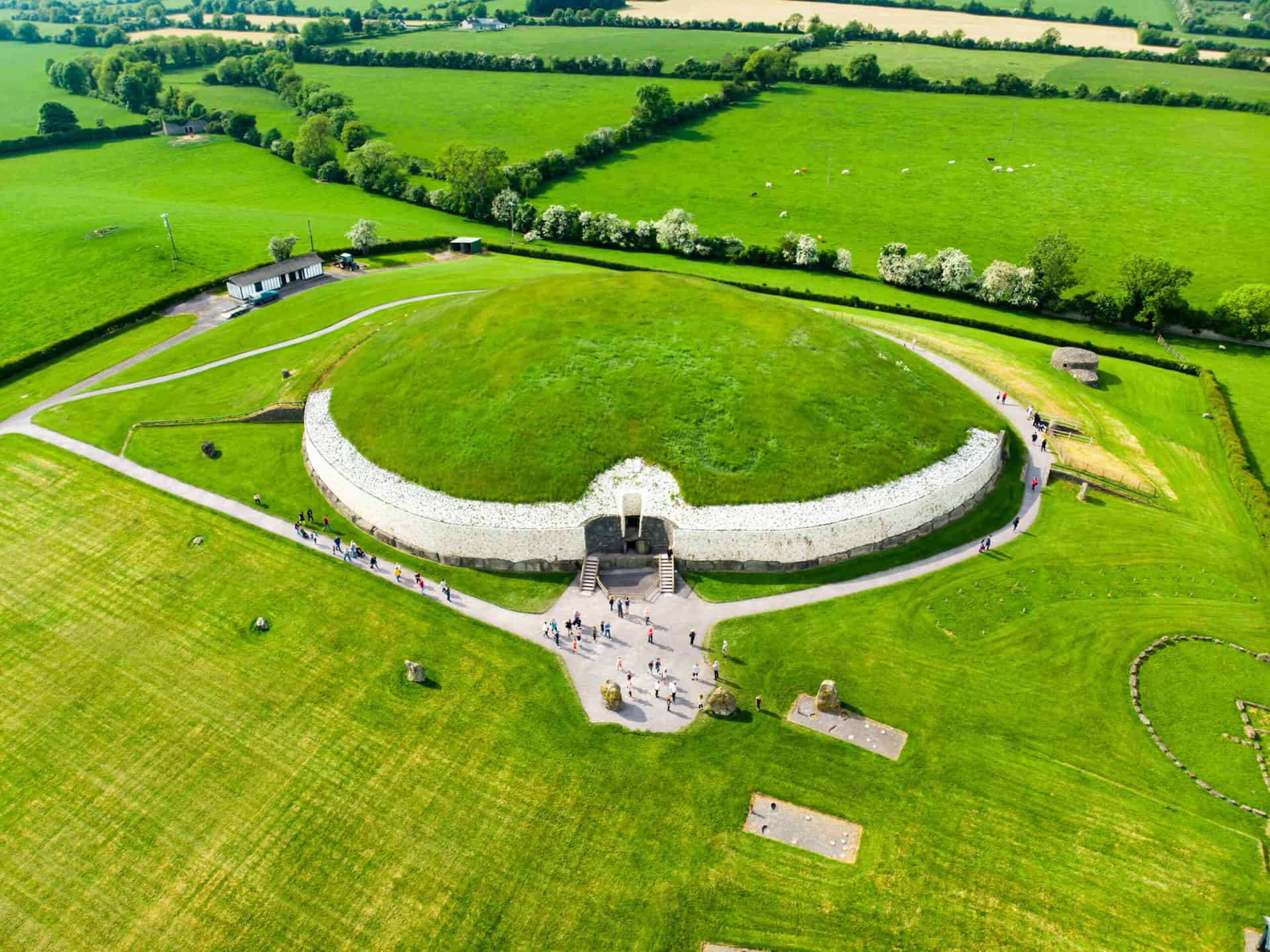
Updated On: April 15, 2024 by Ciaran Connolly
Art can tell you more than you may think about the people who made it. It’s creation and purpose can give us an insight into a societies religion, social status and values among many other things.
In this article you will find a concise history of Irish art and architecture in the pre-Christian period of Ireland.
Pre-Christian and Celtic Irish Art can be divided into 3 main eras:
- The Stone Age: 6000BC to 2000BC
- The Bronze Age: 2000BC to 500BE
- The Iron Age: 500BC to 400AD
These periods of time get their name from the materials used to craft tools and weapons. As people evolved they learned to leave behind their stone weapons and tools which were blunt and fallible in favour of more durable metals. Better tools and weapons meant that people were better protected and that the overall quality of life could be improved.
The nomadic people who occupied Ireland who would become the first farmers during the late stone age. They like the Celts who arrived during the Iron Age were polytheistic. This means that they worshipped many Gods including versions of the Tuatha de Danann, Ireland’s most ancient race. They also celebrated pagan festivals such as Imbolc (to mark the Spring Equinox) Bealtaine (a Summer harvest festival), Lunasa (celebrated in August after the harvest), and Samhain (modern day Halloween!). Many traditions and customs from Samhain can be observed in modern day Halloween. You can read about them in our article about Ireland’s history behind Halloween traditions.
For concise Irish art facts and history suitable for Leaving Cert art history history essays we would recommend also checking out ‘Art History by Deirdre Morgan‘, its a great guide containing the facts and necessary diagrams for student revision!
Looking for quick information on Pre-Christian Ireland? why not skip ahead to our handy list of FAQ’s:
The Stone Age in Ireland
During the Stone Age art was made for religious purposes using stone tools (usually flint) to carve out designs on stone.
The Neolithic Stone Age was the most recent period of the Stone Age, and the period in which the earliest known pieces of art can be found in Ireland. Neolithic literally means ‘new stone’.
The function of Stone Age art was primarily for religious purposes such as decorating tombs. There are 3 different types of ancient tombs found around Ireland; a portal dolmen, a court cairn and a passage tomb.
Portal Dolmen
A Portal Dolmen is a very distinctive type of burial ground. A large cap stone is place at an angle on two or more standing stones, resembling a tripod like structure. Originally a small mound of stones or a cairn was placed around the structure to achieve a level appearance.
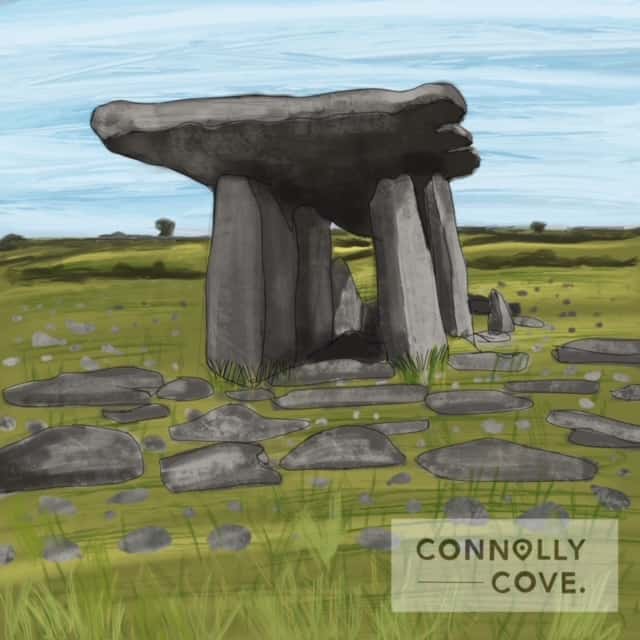
The stones have since eroded away leaving the structure as we know it today. In some cases the stones may have been removed intentionally though we can’t say for certain.
Court Cairn
The Court Cairn is a two part mound, containing a burial chamber inside the tomb and a gallery outside. It is thought that the gallery outside was held for religious ceremonies.
While these structures are very interesting they don’t generally contain any stone carvings, which is why we will spend the majority of the section on the stone age discussing passage tombs.
Passage Tomb
Passage tombs are arguably the most spectacular tombs available to see in Ireland. Newgrange is a famous passage tomb found in the Boyne Valley or Brú na Bóinne, Co. Meath. It is the largest Megalithic Tomb in Ireland. Megalithic literally means large stone. We know that Newgrange is a tomb as human remains were found onsite.
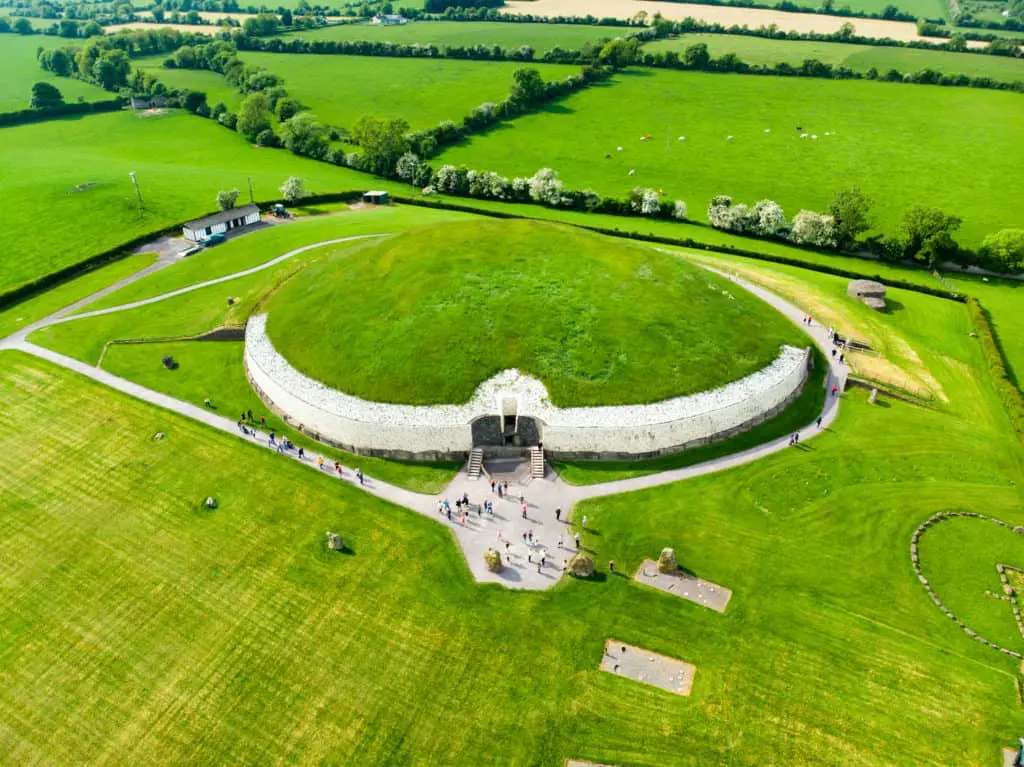
It is located near two other burial tombs named Knowth and Dowth. The architecture of Newgrange is something to be marvelled at. Built hundreds of years before the pyramids in Egypt or Stonehenge in England, Newgrange is Ireland’s architectural marvel. Still standing today, it is considered one of the best stone structures ever built. Considering that the tools and machinery that we take for granted today had not been invented yet, the structural integrity of Newgrange is even more impressive.
One interesting thing about Newgrange is that it consists of large stones that were not found in the nearby vicinity. Stones were transported by workers along rivers and log rolling technique were used to move the stones along the remainder of the journey on land.
The sheer size and scale of Newgrange as well as its unique light function highlight how social and advanced the society in ancient Ireland actually were. While the stone age is often associated with less than intelligent cavemen, the reality of the situation is that building a structure like Newgrange took years of planning and determination.
The architects of Newgrange had to work together to transport materials as well as figure out how to create the famous light feature. They were evidently highly skilled mathematicians, engineers, stone carvers and architects, understanding how to build a sturdy tomb without the use of bricks and mortar. They also had some concept of the calendar year we use today, as they needed to work out how to create the lightbox so that it would only illuminate the chamber inside during the Winter Solstice.
Newgrange Tours
The Newgrange Winter solstice is a popular event every year around the world. Everyone is welcome to gather outside the Newgrange passage tomb, but a lottery is held to decide who can enter the chamber when it illuminates. This is simply due to the fact that there is only a short period of time in which the chamber lights up, and letting too many people in during this time could cause damage to the structure.
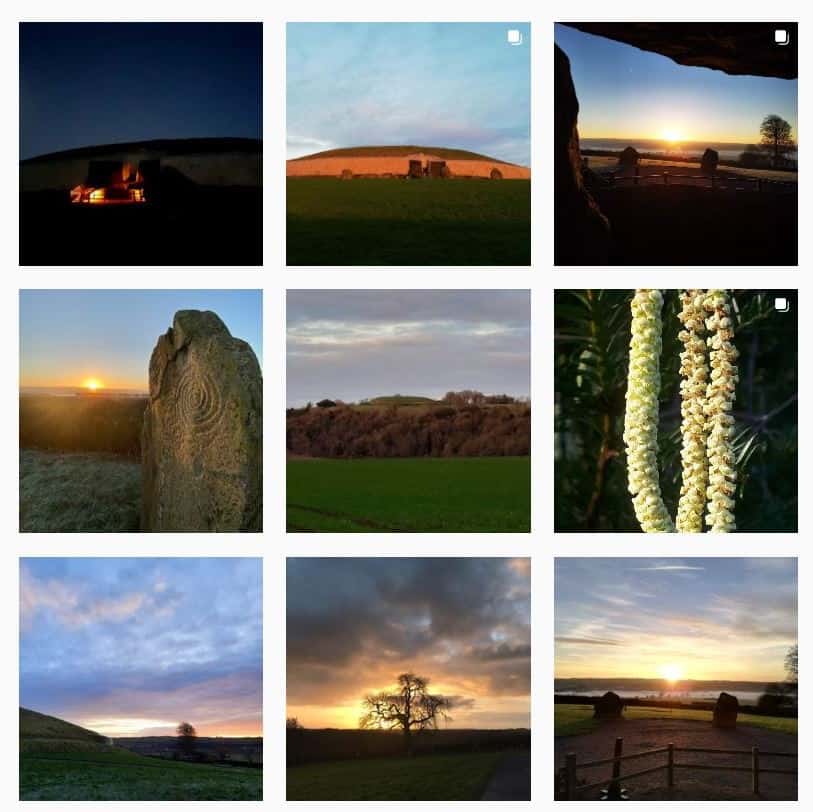
Structure of Newgrange:
Newgrange is a cairn. A cairn is a large mound of stones. It is approximately 11 metres tall and about 80 meters in diameter. Stones from the River Boyne, Wicklow mountains, Drogheda and Dundalk Bay were used in the construction of the tomb.
97 large boulders known as Kerbstones surround the cairn, several of these stones are missing but the ones that remain offer some of the most interesting art designs that Newgrange has to offer.
The passage and chamber only enter 1/3 of the mound. Orthostats, or large stones were used to create the passage walls.
Arguably the most interesting feature of Newgrange’s structure is the roof box. the roof box is what allows light to enter the chamber during the winter solstice. The passage floor rises gradually so that the roof box, which is located high above the entrance, is level with the chamber floor at the end of the passage. This is how the sunlight can travel down the 19 metres of passage and illuminate the chamber inside.
The roof of the chamber is another architectural feature that is worth mentioning. The roof is made using a corbelled or cobbled roof technique. This involves stacking stones on top of each other. The stones gradually narrow inwards so that the peak of the roof only consists of one stone. This technique is surprisingly strong and could withstand the weight and pressure of the mound of stones that was placed compactly on top.
One major point on conflict surrounding Newgrange is that the facade or front of the tomb was actually added by archaeologists when they excavated the tomb. A lot of Quartz (large white stone) was found in front of the tomb at the entrance and was added to the walls of the tomb. As this was not part of the original design it has been greatly criticised over the years. It would be hard to picture Newgrange without the white quartz walls if we’re being honest!
Newgrange was created to hold the cremated remains of dead people. there were 5 different remains found at Newgrange. The other function of the passage tomb was to illuminate the chamber at dawn during the winter solstice which would usually last for 15-17 minutes.
We can only speculate about who the tomb was built for. It was definitely built for someone important; considering the amount of people and the time required to build the tomb, it is logical to assume that this was a burial ground for someone who ranked high in society. Also, considering the light effect during the winter solstice we can assume the location had ritualistic importance.
The solstice marks the end of the Summer growth season and during ancient times a harsh winter could have been devastating to a clans survival. Crop failure or excessively cold temperatures could be a tribes demise.
The importance of the sun cannot be ignored when examining the Neolithic people. The stone age people were pagans, and the sun was one of the things they worshipped. The fact that the sun enters the tomb further suggests that the mound was built for someone very important. There was so much effort and meticulous planning to ensure that sunlight reached the remains in the chamber.
The sun also supported life in the form of crop growth. A year of bad weather has a significant impact on the yield of crops, even more so in the past, so trying to appease gods who may have been able to influence such things was a logical thing to do.
We may never who why or who for the tomb was built, but we can still appreciate it for what it is; a wonder of the past.
The decoration of Newgrange
Newgrange has distinctive Neolithic art carved into the stones around the tomb. Stone tools made of flint were used to create the designs using various techniques.
The design techniques used are called incision and pick dressing. Incision is the technique used to carve away stone. The result is that the design itself is scratched onto the stone. Pick dressing is a deeper incision that carves away the design and creates a more notable difference in the relief of the stone.
The Newgrange designs are simple abstract, geometric shapes, including motifs such as circles, spirals, arcs, chevrons and lozenges. While we don’t know for certain, the shapes may be symbols that have a deeper meaning. It would be easy to assume the circles are symbols of the sun for example, but this is speculation on our part.
Although there any many carvings throughout the tomb, the best examples of art in Newgrange are the Entrance stone, Kerbstone 52 and the roof box.
Kerbstone or K52 is located directly opposite the entrance stone at the other side of the mound, which could be an explanation as to why it is so well decorated. The Entrance stone or K1 also has an impressive design as illustrated below. The roof box is decorated with lozenges or diamond motifs.
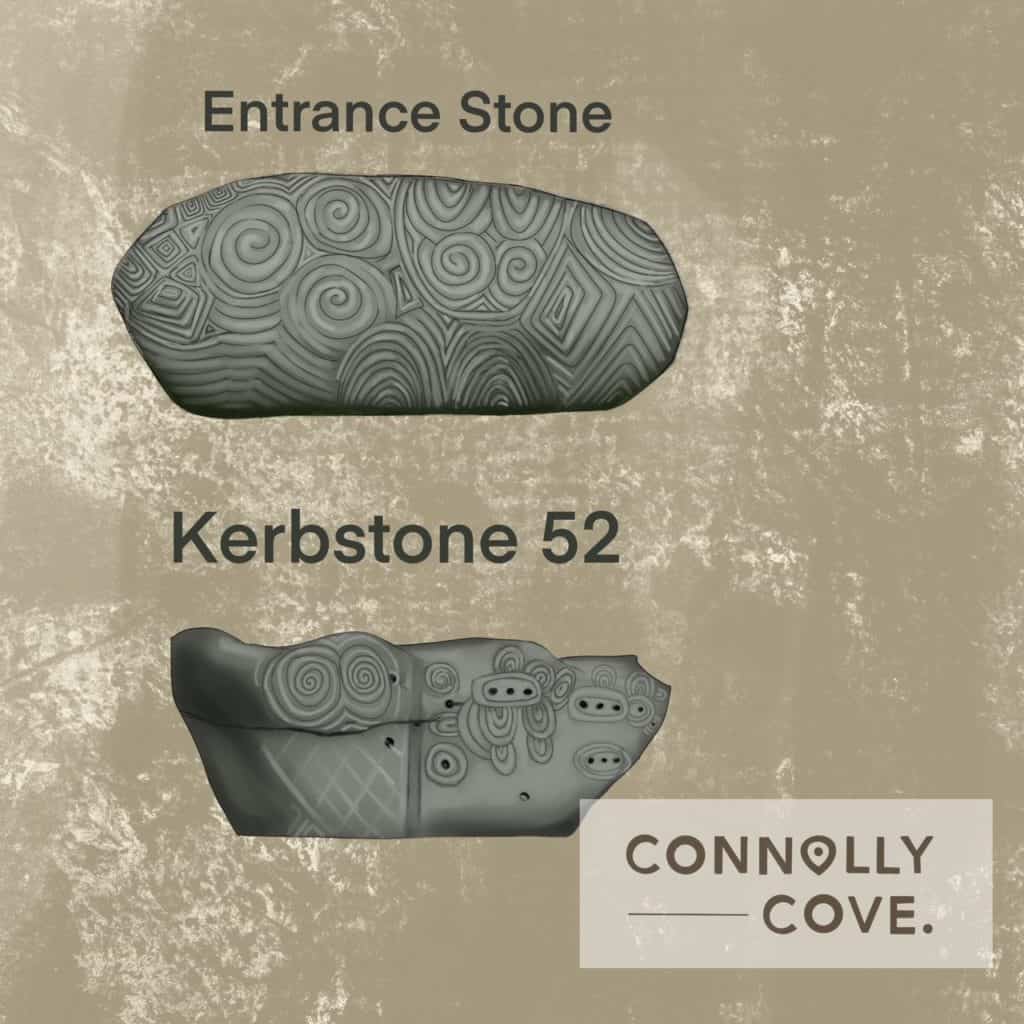
Where can I see ancient burial tombs in Ireland?
There are over 180 portal dolmens in Ireland. Poulnabrone dolmen in the Burren, County Clare, is the most notable for its unusual large dolmen and definitely worth a visit.
There are over 390 court cairns in Ireland. The majority of court cairns are found in the Northern part of Ireland. Creevykeel Court Tomb in Sligo is a fine example of a court cairn in Ireland.
There are 300 passage graves in Ireland. Newgrange as well as its satellite tomb of Knowth and Dowth in Co. Meath are indisputably the most famous passage tombs in Ireland.
The Bronze Age in Ireland
Around 2000BC metalworking knowledge spread throughout Europe and into Ireland. Cooper was an easily malleable metal, and tin was durable and strong. By mixing a small amount of tin with copper, a much stronger metal was created called Bronze. Bronze retained the beneficial characteristics of each and did not decay.
It is important to remember that while the tools used were made from Bronze the majority of art was made from Gold, which was plentiful at this time in Ireland, unlike today. Bronze was used to craft tools and weapons, and Gold was used to create artworks.
Copper was readily available to mine in Ireland during the Bronze Age, but tin was very scarce. The people who occupied Ireland at this time had to trade tools, weapons, metals, and other items for Tin. They traded with many countries in Europe, but primarily with England. It is fascinating to think that Ireland traded internationally with European countries thousands of years ago and highlights the social nature at the time, which is often overlooked.
Gold had important qualities aside from its aesthetic value that made it perfect for craftsmanship, namely it was malleable. Gold could be heated, melted, flattened and hammered, without cracking or losing shape once cooled. This quality allowed for never before seen customisability options.
The Bronze Age is the first recorded time in Irish history where art was created for vanity purposes. Quite simply art was made for arts sake. Before this art was created purely for religious decorative purposes. But from now on skilled craftsmen expanded their art for aesthetic purposes such as jewellery as well as religious purposes. Aesthetic and spiritual motivations often went hand in hand throughout history actually, with beautiful objects being crafted to honour an organisations religion.
That is not to say that this art had no meaning. It is more than possible that wearing such extravagant jewellery was a symbol of social status. It is intuitive to believe that people who were seen as important in this society (tribe leaders and religious figures, for example) would have worn the jewellery.
Considering the weight of these pieces (solid gold) it is also safe to assume that they were only worn for special occasions.
The best preserved types of jewellery found from the Bronze Age are gold discs, lunulas, torcs, dress fasteners and gorget’s. Scroll down to read more about each piece of Bronze Age art!
The sun disc
The gold disc is also known as the sun disc further enforcing the fact that pagans in Ireland worshiped the elements. It was one of the first metal objects crafted in Ireland. Gold was hammered flat until it became a thin sheet. It was then cut into a circular shape using a bronze tool.
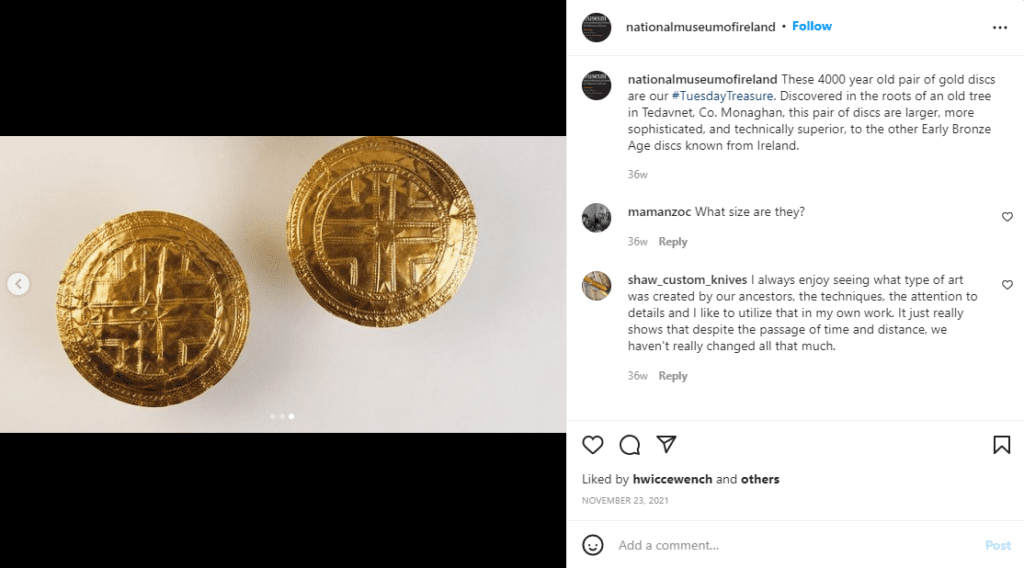
A new technique was used to create the disc called repoussé. This technique involved hammering the design from behind so that it stood up in relief from the disc. This created a three dimensional effect. There were two small holes in the centre of the disc used to attach the disc to hair or clothes.
The Repoussé technique was obviously not possible in stonework and highlights how the overall transition to metal working was beneficial for expanding the opportunity to create new artforms using alternate methods.
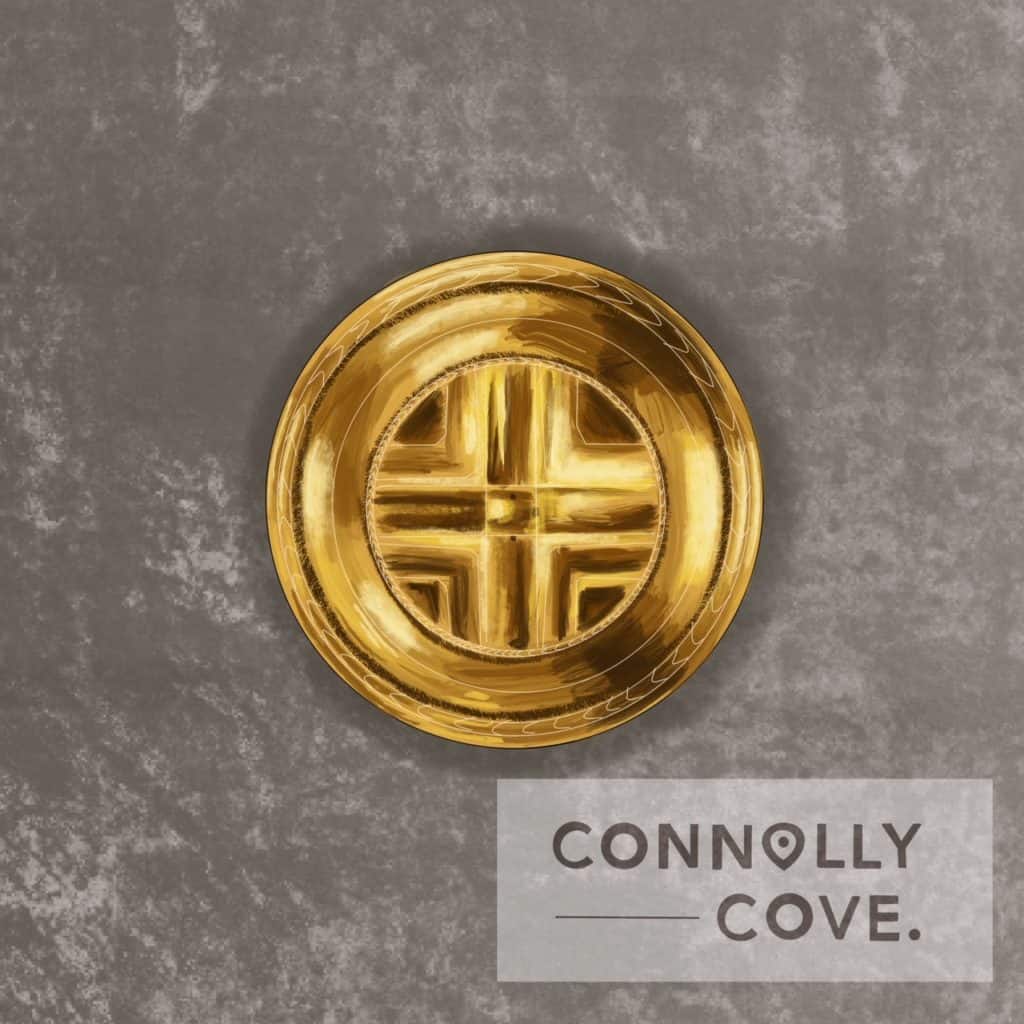
Lunula
Lunulas were worn around the neck. They were made from gold and created using the incision technique, meaning the design was scratched from the front. Common motifs included chevrons and lozenges which were triangle and diamond shapes, respectively.
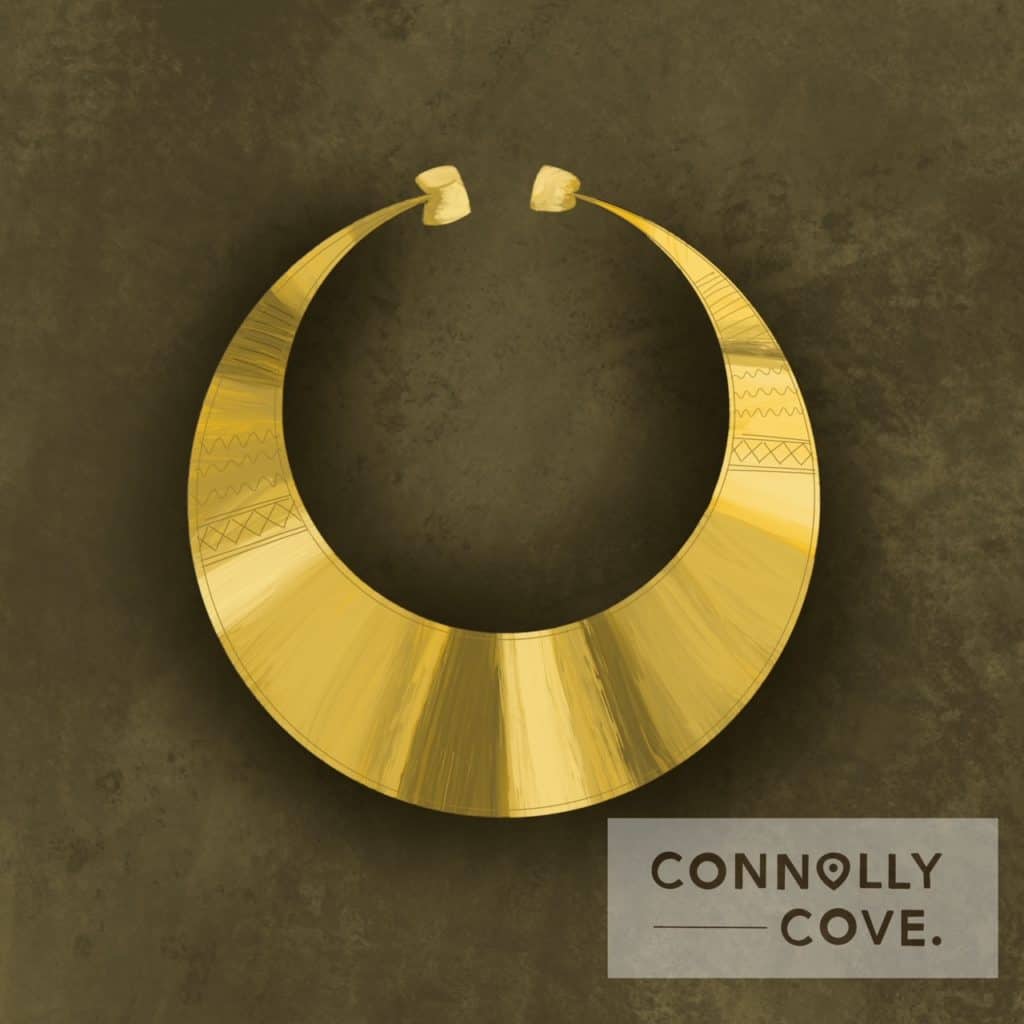
Torcs
Torcs were golden bands that could be worn around the neck, arms, waist or even as earrings. They needed much more gold to be created than a lunula or sun disc, and because of this they were quite heavy.
Another technique called flanging was used in the process of making the torc. Flanging involved curving the metal before twisting it which allowed for a thinner more delicate rope like shape.
There are many unique variations of torc.
Dress Fasteners
As we progressed from the earlier Bronze Age jewellery to the middle age, the jewellery became more practical and the dress fastener was created. There are many examples of dress fasteners and it was thought that they were used for ceremonial purposes.
Concentric circles (circles within circles) were incised on the fasteners and this intricate detail could only be created by a skilled craftsman.
Gorget
The penultimate piece of art from the Bronze Age is the Gorget. Created during the late Bronze Age, the Gorget is a more refined and intricate version of the lunala that we have already discussed.
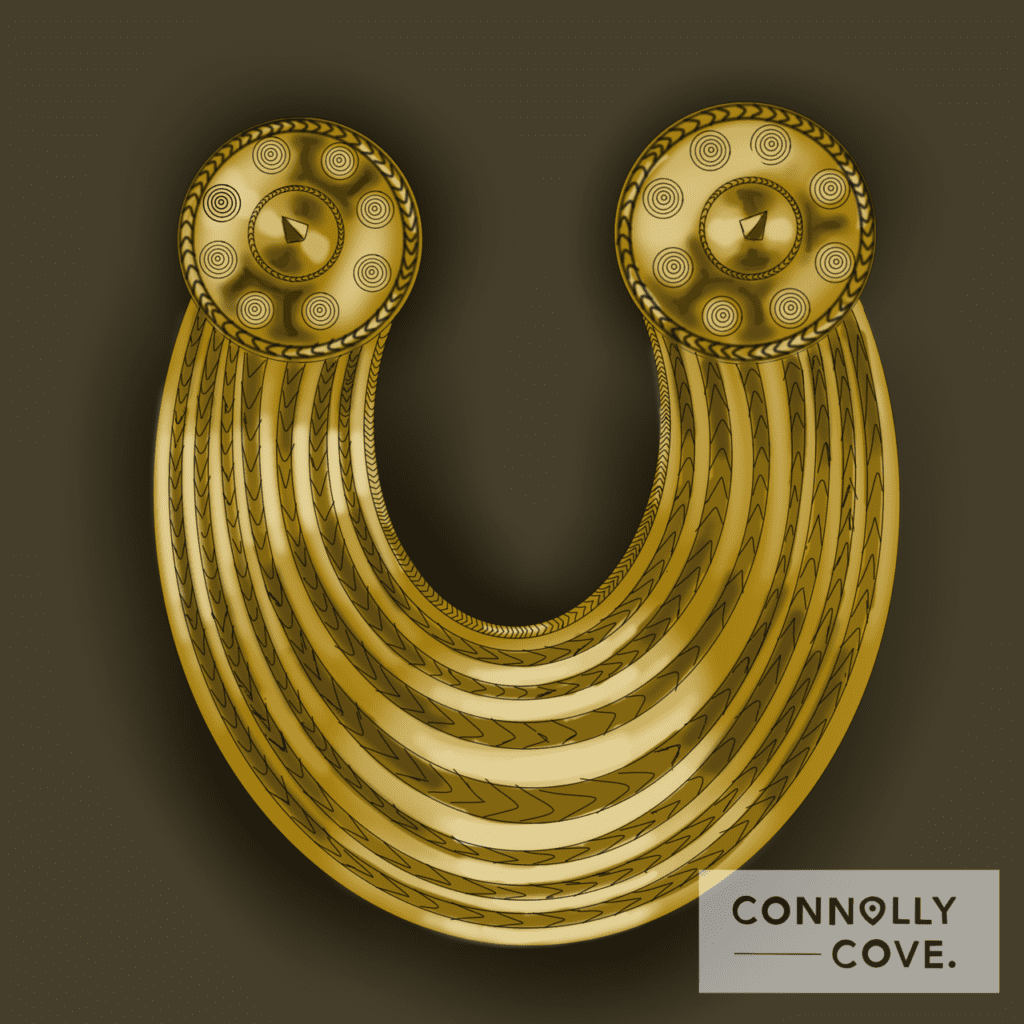
Like the lunala they were worn around the neck, and due to its detail we can safely assume that this was only worn for special occasions or by very important people.
The gorget itself comprised of three sections, two concave discs connected by a collar. The collar is designed with a rope pattern that juts out from the golden sheet using the repoussé technique, where the design is hammered from behind.
The disc has a range of designs, from concentric circles incised around the edge of the discs, to the conceal shaped boss extruding from the centre of the disc. Between the concentric circles and centre point there is a repousséd ring of circles.
The Glenisheen Gorget was found in the Burren region of Co. Clare, near a town called Glenisheen.
The Gorget combines familiar elements of both sun discs and the lunula to create a design that is a quintessential Bronze Age item.
Where can I see Bronze Age Jewellery?
The National Museum of Ireland has a permanent exhibition called ‘Ór – Ireland’s Gold’. At this exhibition you can see items such as the torc, dress fasteners, sun discs, lunulas and gorgets.
The Iron Age in Ireland
The Celts invaded Ireland during the Iron age bringing with them an entire new culture, including a new language, new customs and a unique style of art. This culture would become synonymous with Ireland’s now famous Gaelic culture.
The Iron Age is thought to have taken place from 500BC to 400AD which marked the arrival of Christianity in Ireland and the beginning of historical record keeping.
The knowledge that Iron was a better metal to use had gradually spread throughout Europe and reached Ireland. What made Iron more suitable than bronze was the fact that it was much stronger and durable than Bronze, making it a better choice for tools and weapons.
Once again tools and weapons were made using Iron, however as you will soon find out, gold had become scarce in Ireland by this time in history. Bronze was used for some artworks or sometimes Gold was plated on an object. This means a thin layer of Gold was used on the outside of the object, with a less rare metal comprising of most of the structure.
La Tene
A new style of art was introduced by the Celts known as La Tene. La Tene is an abstract curvilinear form of design which commonly features floral and nature motifs. Other emerging patterns are birds and trumpets. As Christianity became more popular, the two styles would merge to create the very recognisable ‘celtic’ designs we know so well today.
La Tene got its name from a town in Switzerland. A large hoard of objects designed with the La Tene style were found in a lake near the town of La Tene. They were the earliest known objects discovered in the abstract curvilinear design. It is thought that the Celts would sacrifice items in lakes as a religious custom. This means that many Iron Age objects have been lost or destroyed by the Celts themselves, fortunately some have been recovered.
The triskel is another common motif in La Tene art, a wheel made up of three lines that curve out from the centre point into spirals.
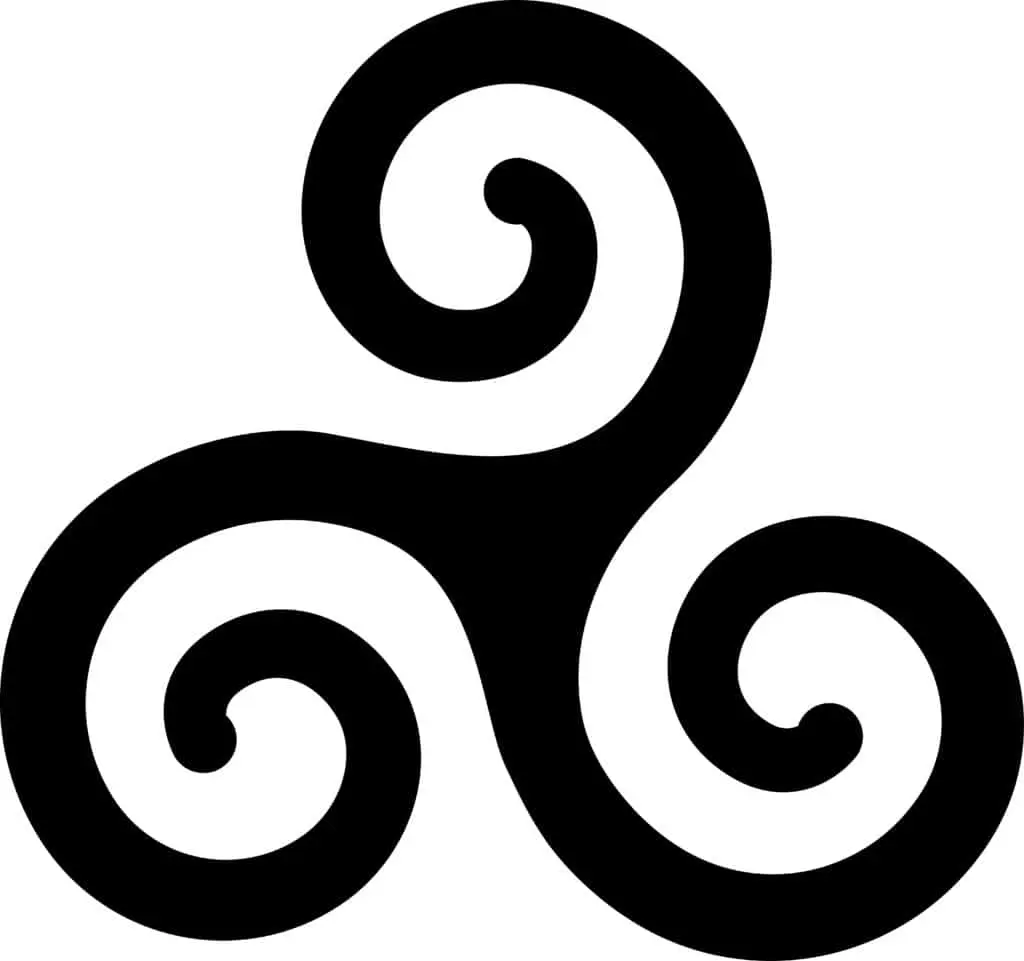
A note about the artwork during the Iron Age.
It is important to remember that while Iron had become the most prominent tool for crafting tools and weapons, Bronze and Gold were still the main metals used for creating art. While aesthetically more beautiful, these metals also did not rust or decay unlike Iron.
Loughnashade Trumpet
One of the most impressive and unique of all of the Pre-Christian artworks is the Loughnashade Trumpet. Like in many cases, the trumpet gets its name for the town of Loughnashade in Co. Armagh where the item was discovered near its shores, close to a historic Celtic stronghold.
The Loughnashade trumpet is one of the earliest known trumpets in the world. Even more fascinatingly, the bronze trumpet still works!
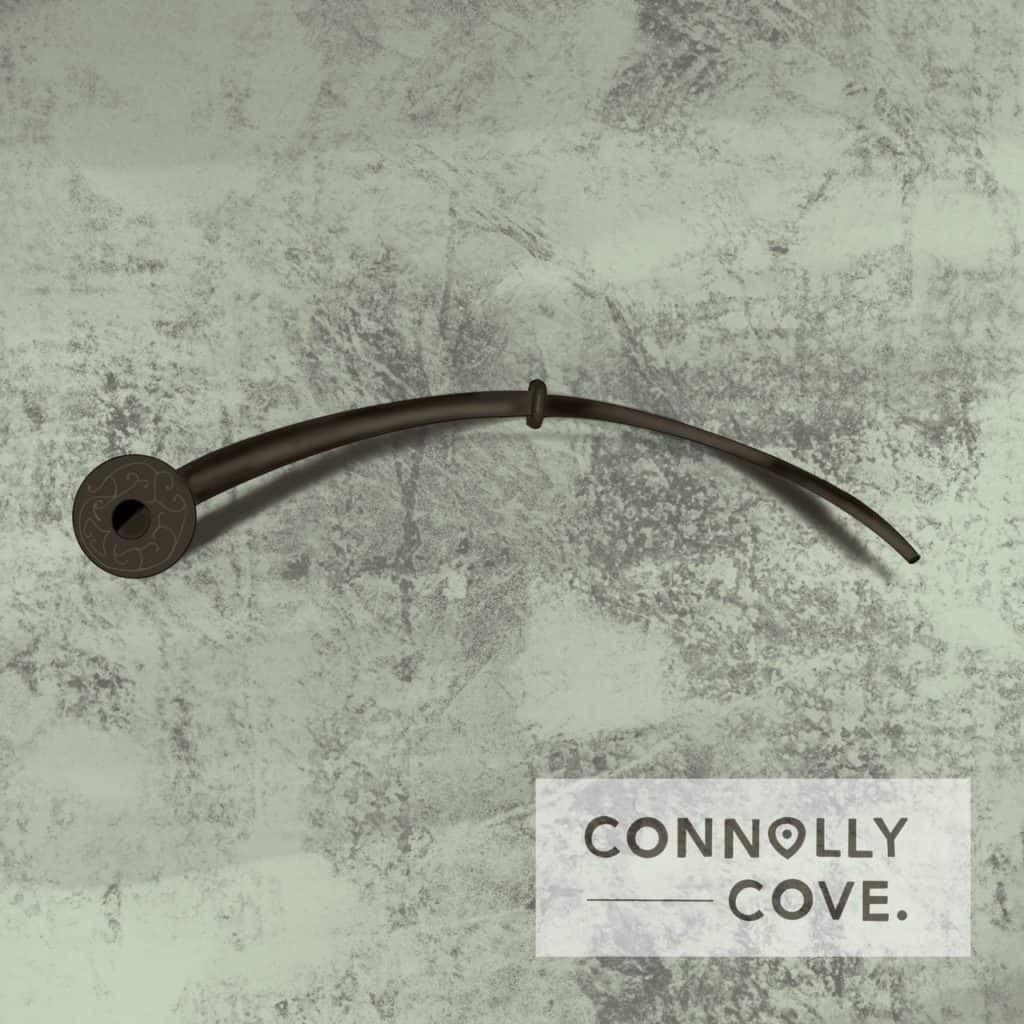
The function of the trumpet has many possibilities. Many believed that its function was for more than the ability to play music alone. It could have been used during religious ceremonies or as a battle cry in wars. At the very least we can assume that this was crafted for an important reason or for a person of high social standing / authority.
This assumption is made with the majority of pre-Christian Celtic / Pagan artworks in Ireland, because the amount of time and valuable resources required to craft such items, as well as their rarity would suggest that they were intentionally produced for special reasons.
Three other trumpets and a human skull were buried with the Loughnashade trumpet, but they have since been lost.
Broighter Collar
Arguably the finest example of the La Tene style is the Broighter Collar, found in a hoard of Iron Age objects in Co. Derry.
All of the objects in the hoard, including a model boat, necklaces and torcs were made of gold. By the end of the Iron Age most of the Gold in Ireland had been used up and had now become the precious metal it is considered today.
The Broighter Collar is hollow, and was made from soldering two plates of gold bent into a circular shape. The design was punched from the back, using the repoussé technique and consists of trumpet and vine like curves. As well as repoussé, the incision technique was used to carve out designs from the front. The combination of these techniques create an interesting blend of designs in relief as well as carved into the collar.
A Mortice and Tenor style lock was used to clasp the device together when worn, which was a much more advanced lock than previous styles used.
Unfortunately the collar was broke in two when it was discovered by a farmer who ploughed over it in a field.
Petrie Crown
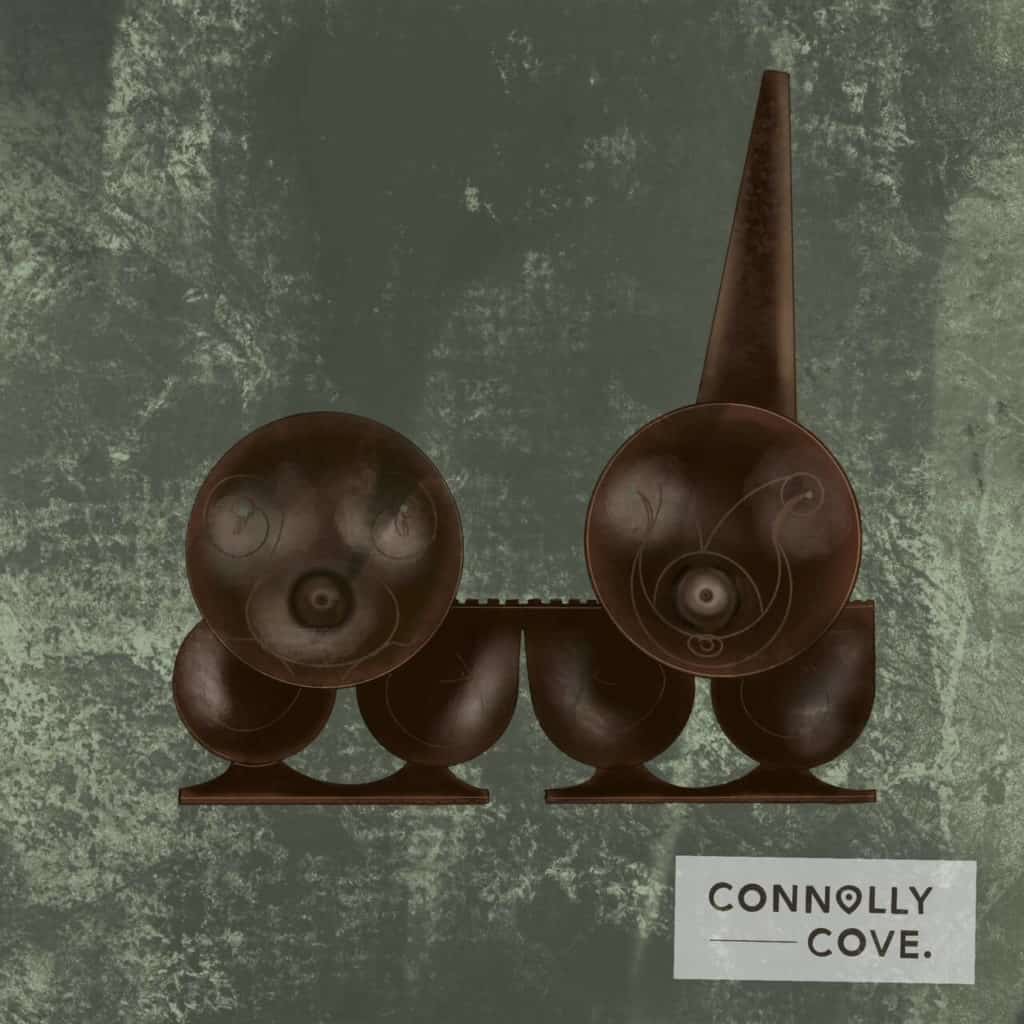
The Petrie Crown is a Bronze crown which also features the La Tene style. It originally consited of a circular band and two discs and two horns, but the crown was damaged and one of the horns was lost.
The Return of Stone Carving
The Turoe Stone in Co. Galway, and the Castlegrange Stone in Co. Roscommon are examples of the revival of Stone age carving during the Iron Age. The Iron Age also saw a revival of art for religious purposes alongside aesthetic purposes, something that would be continued throughout pre-Christian Ireland.
There is a clear linear progression of art developing throughout each ancient Irish period and the overall pre-Christian era in Ireland. While it is a shame that many pieces have been lost, destroyed or damaged, it is insightful to see how much we can learn about ancient Ireland from the art produced during that time.
The End of the Iron Age
The Iron Age ended during the fifth century as Christianity arrived in Ireland. Art in the following centuries would be primarily produced for religious purpoes, with iconic Irish creations such as the Book of Kells, now in Trinity College, and the Ardagh Chalice representing the epitome of high quality design during the Early Irish Christian Period.
While many distinctive pagan celebrations and ways of life were replaced with Christian alternatives, metalworking and design skills learned in the Iron Age were not abandoned. Instead, the iconic La Tene style was incorporated into many religious pieces of art, resulting in a new and distinctly Irish or Celtic design.
Where can I see Iron Age artwork
The Loughnashade Trumpet, Broighter Collar and Petrie Crown can be viewed in the National Museum of Ireland.
Frequently Asked Questions
FAQ’s about the Stone Age in Ireland
When was the Stone Age in Ireland
The Stone Age took place from 6/7000 BC to 2000 BC.
When was Ireland first inhabited?
Ireland was first inhabited roughly 9,000 years ago during the beginning of the Stone age
What were Ireland’s first settlers like?
The first settlers in Ireland, mesolithic or stone age people were originally nomadic hunter gatherers. Over time their knowledge of using stone tools allowed them to settle down and clear the land for farming during the late stone age. Ireland’s first farmers were called neolithic people or new stone age people.
How did Ireland’s first settlers arrive in Ireland?
As Ireland was already an Ireland by the stone age, it is strongly believed that the mesolithic people arrived in Ireland by boat via Britain.
FAQ’s about the Bronze Age in Ireland
When was the Bronze Age in Ireland?
The Bronze Age took place from 2000 BC – 500 BC
FAQ’s about the Iron Age in Ireland
When was the Iron Age in Ireland?
The Iron Age took place in Ireland from 500 BC – 400 AD
What came after the Iron Age in Ireland / When did the Iron Age end?
The Iron Age ended as Christianity arrived in Ireland. The Celtic era had come to an end, and while its culture would remain in Ireland it was significantly changed and merged with Christianity.
When did the Celts arrive in Ireland?
The Celts arrived in Ireland in 500 BC bringing with them an entire new culture and way of life including the knowledge that Iron was a superior metal for weapons and tools than Bronze.
What was the art style of the Celts?
The Celts introduced a new style of art into Ireland called the La Tene style, a curvilinear abstract form of floral, trumpet and avian motifs.
Which period of ancient Irish art was your favourite from this article? What piece of art is the most impressive in your opinion? Let us know in the comments below!
If you enjoyed this piece of writing why not browse some of our other articles about Ireland’s fascinating history anf mythology such as:
Irish Symbols explained | The Celtic Tree of Life Origin | Irish County Names Explained -| Irish Female Artist’s You Should Know About


